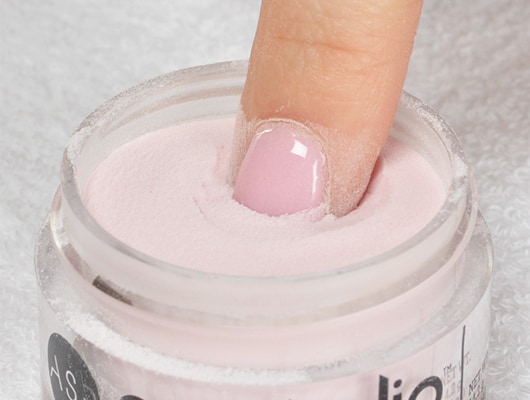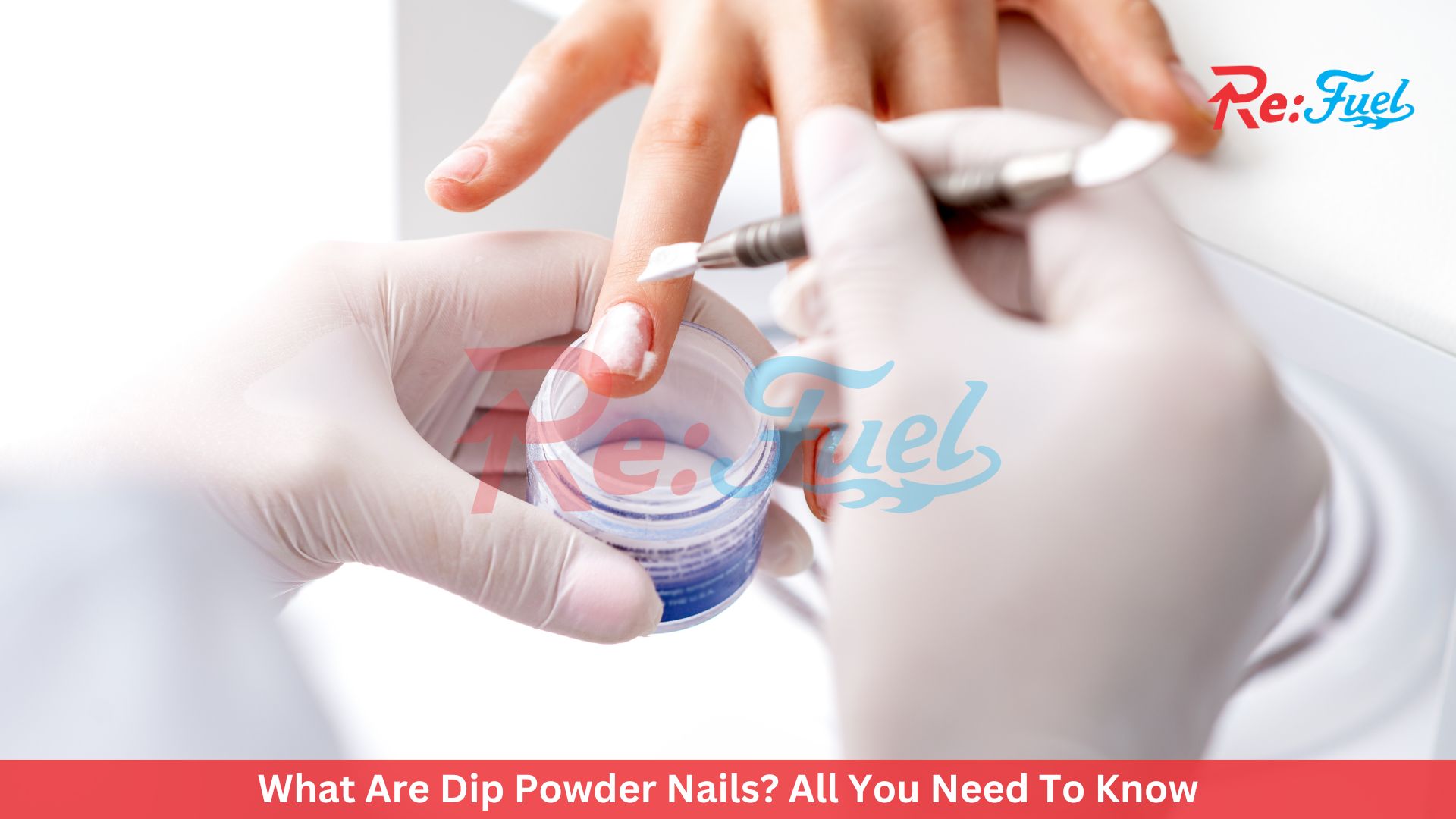In the ever-evolving world of nail care and beauty, dip powder nails, also known as SNS nails, have been gaining immense popularity. They stand as a formidable contender against traditional gel polish and acrylic extensions, offering a unique combination of benefits that have beauty enthusiasts intrigued.
If you’ve ever found yourself entranced by Instagram’s top beauty posts or mesmerized by the oddly satisfying videos on TikTok and YouTube, chances are you’ve stumbled upon the mesmerizing process of dip powder nails. In this comprehensive guide, we’ll explore what dip powder nails are, how they work, their benefits, drawbacks, and everything else you need to know before diving into this nail trend.
Explaining Dip Powder Nails
Dip powder nails are a nail enhancement technique that falls somewhere between gel nail polish and acrylic extensions. The process involves immersing the nail into a container of pigmented powder, creating a beautifully colored and textured surface. To ensure durability and longevity, a clear sealant is applied on top of the powder, resulting in a manicure that can withstand daily wear and tear.

According to board-certified dermatologist and nail expert Dr. Dana Stern, dip powder nails aren’t a recent innovation; they’ve been around since the 1980s. The method utilizes a gentle-yet-effective adhesive combined with acrylic powder, offering a long-lasting alternative to traditional nail enhancements.
Also read: Does UV Light Dry Regular Nail Polish?
How Does Dip Powder Work?
Whether you opt for a salon visit or embark on a DIY adventure at home, the dip powder nail process requires meticulous attention to detail. While techniques may vary slightly between salons, here’s a general overview of the steps involved:
- Prepping the Nails: Before commencing the manicure, it’s crucial to ensure that the nails are clean and free of any dirt and oils. This step also includes pushing back cuticles, clipping hangnails, and buffing the nail surface to create an ideal canvas.
- Bonder Application: After prepping the nails, a bonder is applied to facilitate product adherence and reduce the chances of lifting.
- Base and Powder Application: The base coat is brushed onto the nail, similar to traditional nail polish application. Then, one nail at a time, the nail is dipped into the pigmented powder, and any excess powder is brushed off. Depending on your desired opacity and color intensity, you may need to repeat this step by re-dipping your nails two to three times.
- Drying and Shaping: After allowing a few minutes for drying and hardening, you can begin shaping and filing your nails to achieve the desired look. A topcoat is applied to complete the process.
The number of dips required may vary depending on the length of your nails, with longer nails typically needing more layers. For optimal results, the first dip on longer nails should start at the apex, which is the nail’s weakest point.
The Benefits Of Dip Powder Nails
Dip powder nails offer a range of benefits that have made them a favorite among nail enthusiasts:
- No UV Curing: Unlike gel nails, dip powder nails do not require curing under UV or LED lights. This eliminates the potential risk associated with UV exposure during the manicure process.
- DIY-Friendly: Dip powder nails can be done at home, and there are numerous at-home kits available for this purpose. If you can apply regular nail polish, you can likely master the dip powder technique.
- Long-Lasting: When professionally done, dip powder nails can last for up to a month without chipping. Even DIY dip powder manicures can maintain their integrity for around two to three weeks.
- Color Variety: The popularity of dip powder nails has led to a wide array of color choices, providing ample options to suit your personal style.

However, it’s essential to consider both sides of the coin when exploring dip powder nails, including potential drawbacks and safety concerns.
Also read: Why Do My Nails Curve Down? Causes And Prevention
Drawbacks And Safety Concerns
While dip powder nails offer numerous advantages, it’s important to be aware of potential drawbacks and safety concerns:
- Chemical Exposure: Dip powder nails, like other nail enhancements, involve the use of chemical products that can potentially harm the skin and nail plate if not applied correctly. Even professional-grade and at-home products contain chemicals that require careful handling.
- DIY Risks: Attempting dip powder manicures at home without proper training and knowledge can lead to undesirable results and potential nail damage. It’s safer to seek professional services for both gel and dip treatments.
- Natural Nail Health: Nail enhancements, including dip powder, can dehydrate and weaken the natural nails if not removed correctly. DIY removal attempts can lead to long-term nail health issues. Always have a licensed professional handle product removal.
Dip powder nails, with their impressive durability, ease of application, and diverse color options, have earned their place in the spotlight of the nail care world. However, it’s crucial to approach this trendy nail enhancement technique with caution, especially if you’re considering DIY application. To ensure the health and longevity of your nails, seeking the expertise of a professional is highly recommended. Dip powder nails can provide an attractive and long-lasting manicure, but proper care and maintenance are essential for maintaining nail health and achieving the best results.
In the ever-evolving landscape of nail beauty, dip powder nails offer a captivating option worth exploring. Whether you choose to indulge in a salon experience or master the art of DIY, dip powder nails present a compelling blend of style and substance that’s hard to resist. So, if you’re ready to dip into the world of exquisite nail art, dip powder nails may just be the perfect choice for you.

